I love watching nature documentaries like those narrated by David Attenborough, but even more than that I love watching the natural wonders that surround me every day.
This post features a few of my favorite sightings from 2022.
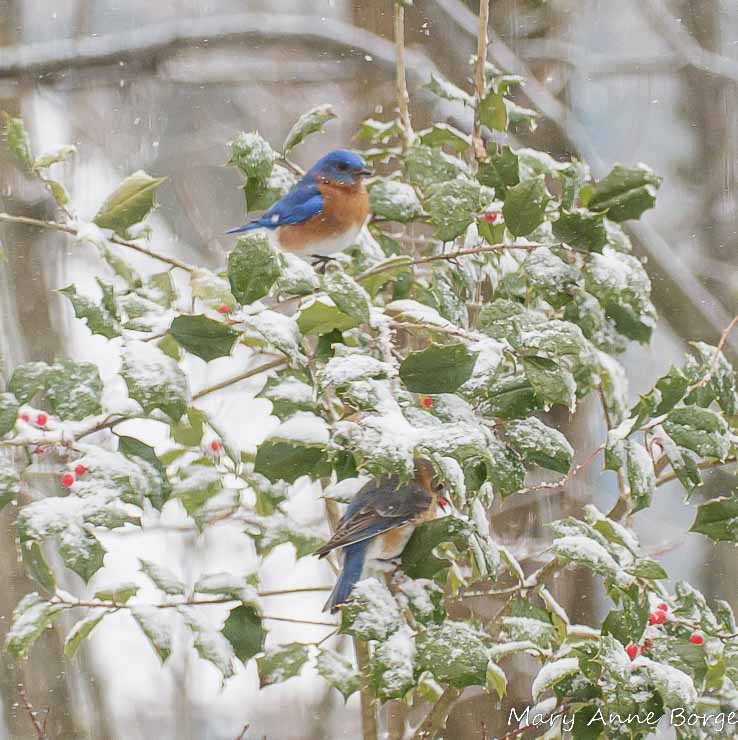
Eastern Bluebirds visit us more often in fall and winter than in spring or summer. In addition to holly berries, they love our heated birdbath, an important source of fresh water in the cold winter months.
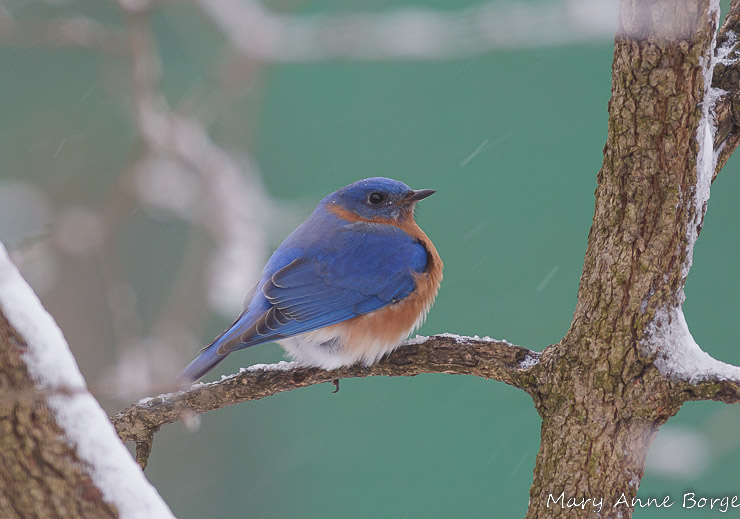
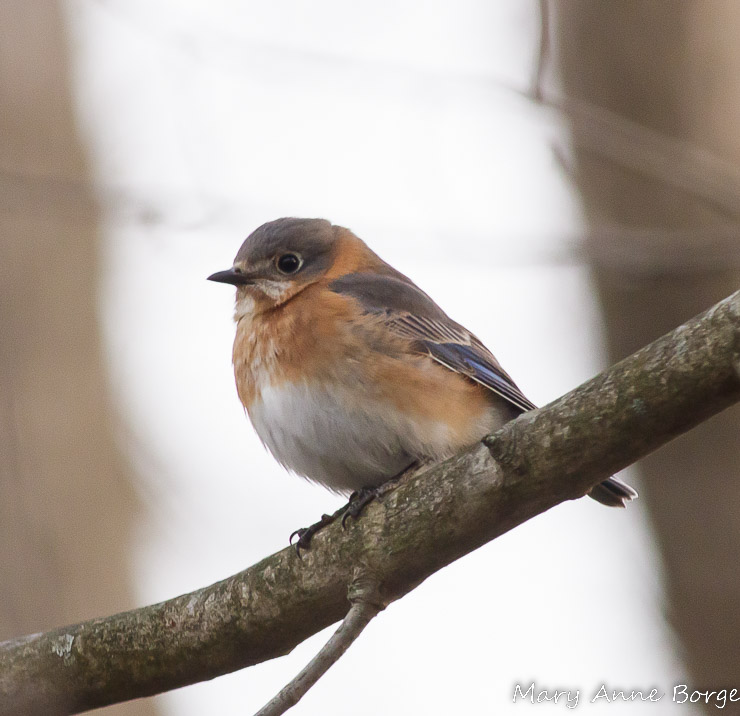
I always love it when an animal reminds me of the value of plants or other habitat that humans sometimes question. The male Northern Flicker (Yellow-shafted here in New Jersey) in the photo below did just that while enjoying Poison Ivy (Toxicodendron radicans) drupes, a berry-like fruit in the woods across from our house.
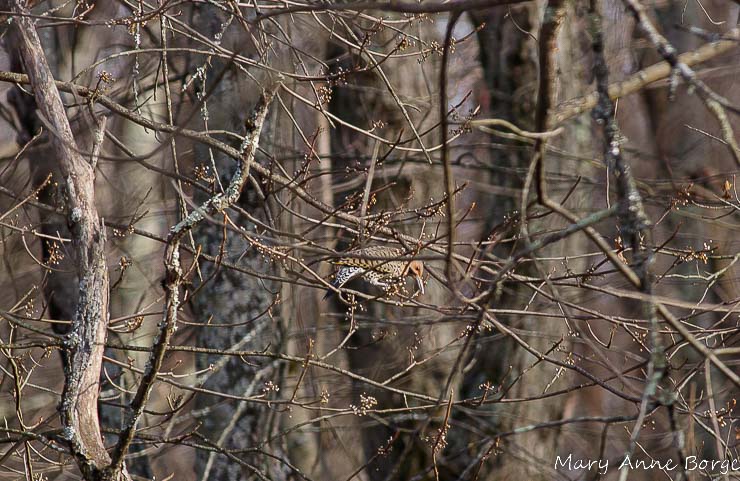
Bottlebrush Buckeye (Aesculus parviflora) is a constant source of entertainment when it blooms in mid-summer, attracting butterflies, Ruby-throated Hummingbirds, Hummingbird Moths, and many different bees and other insects to visit for nectar.
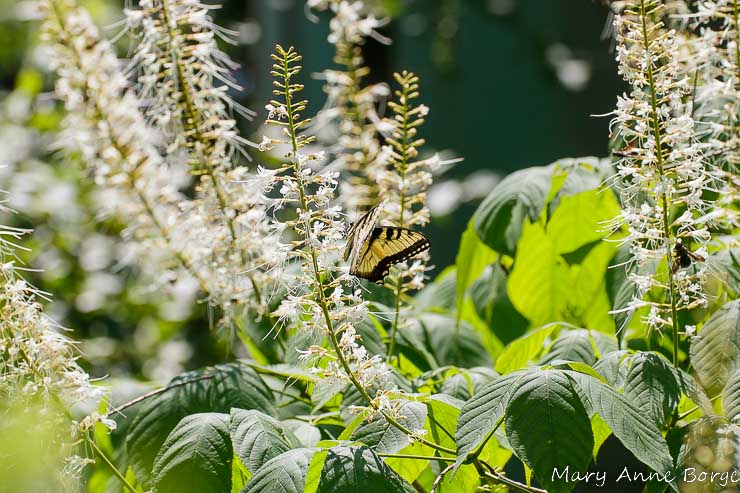
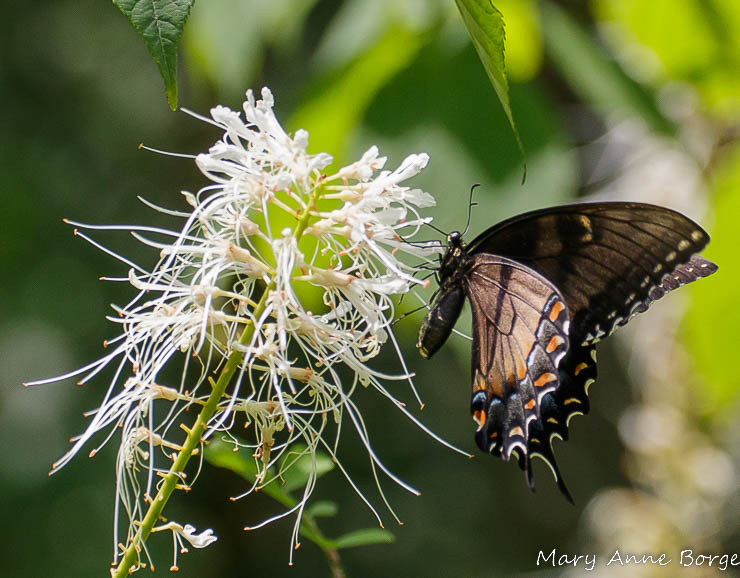
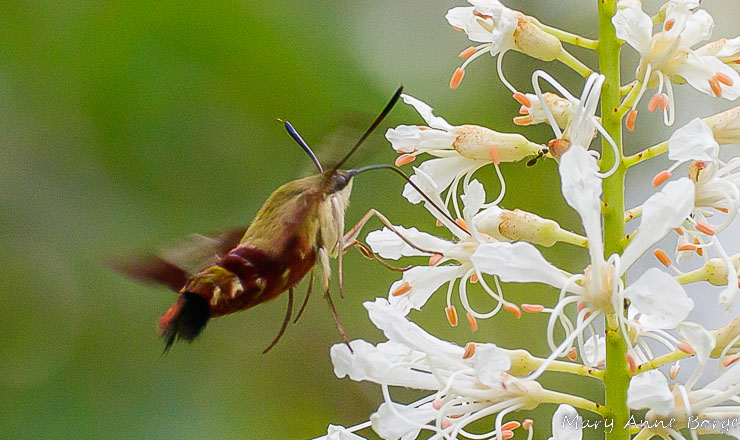
I understood why large long-tongued bees like Eastern Carpenter Bees visited the long, narrow, tubular flowers, but I puzzled over why so many tiny bees would buzz around the plant, since their anatomy isn’t a good fit for the flower size and shape.
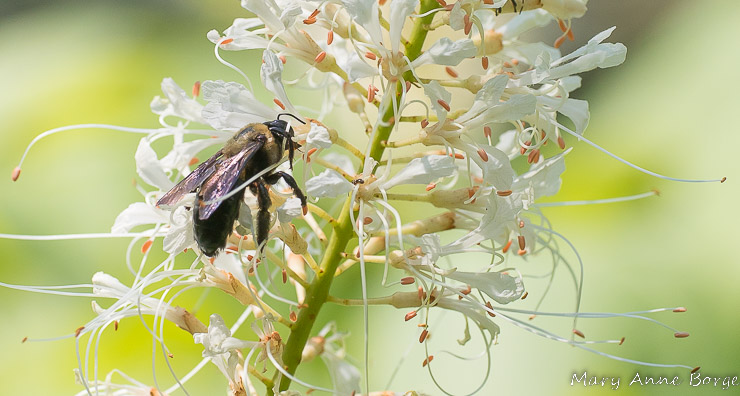
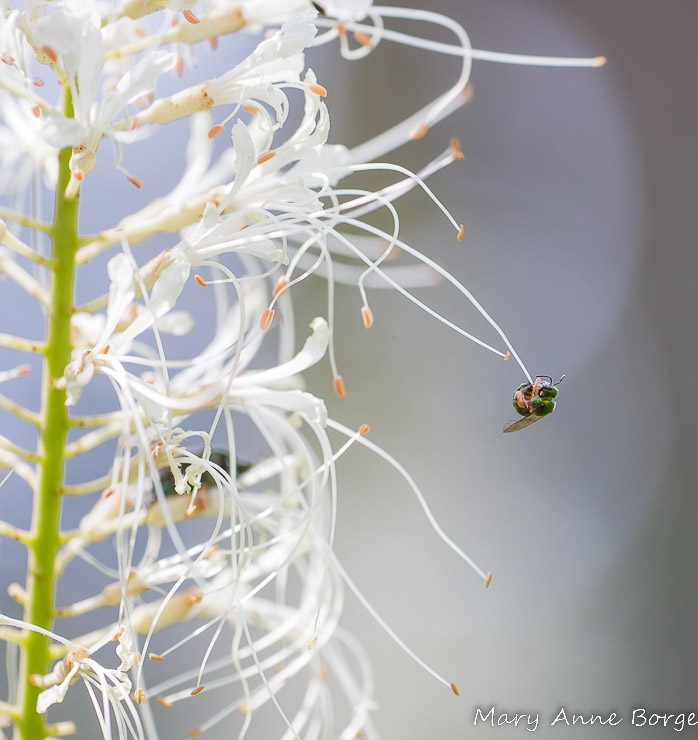
As I watched more closely, I saw tiny sweat bees (Halictid species) landing on the anthers (the flower part from which pollen is dispensed) to harvest pollen, both for themselves and to bring to their nests to feed their larvae. Bees and some flies may visit flowers for pollen, an important food source for them. Both their athleticism and creative thinking was impressive.
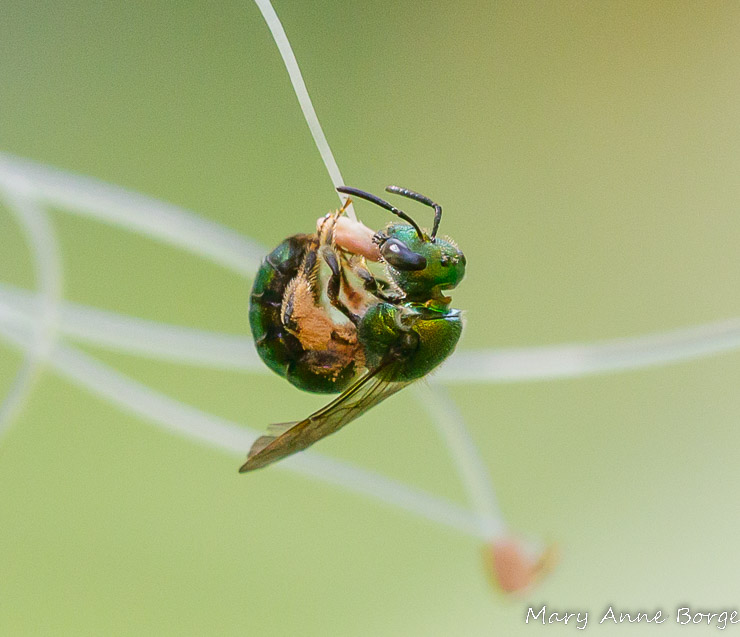
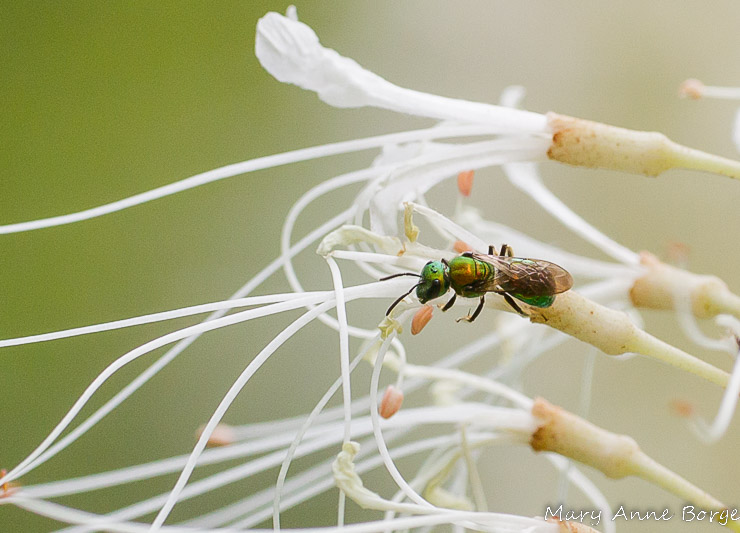
From a different access point, the sweat bees managed to drink nectar from the flowers, but without their bodies touching the flowers’ reproductive parts, so they weren’t likely to be doing the plant any favors in exchange for the nourishment provided.
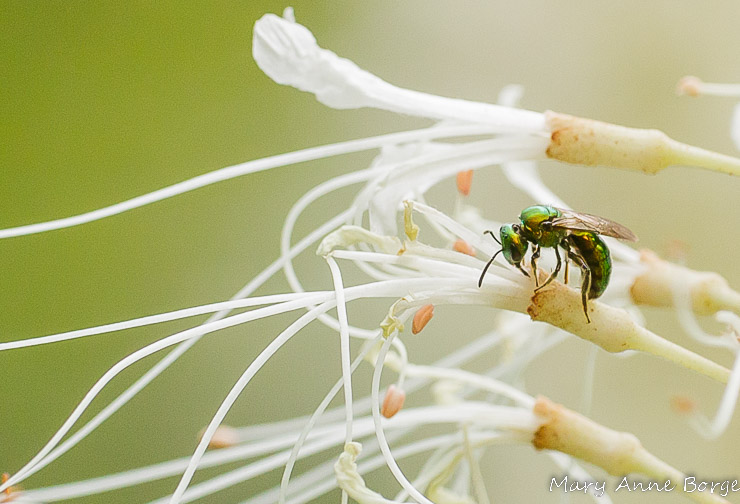
The starburst arrangement of abundant stamens (male reproductive parts) in the flowers of Shrubby St. Johnswort (Hypericum prolificum) are such a successful attraction to potential pollinators that this plant doesn’t waste any energy producing nectar.
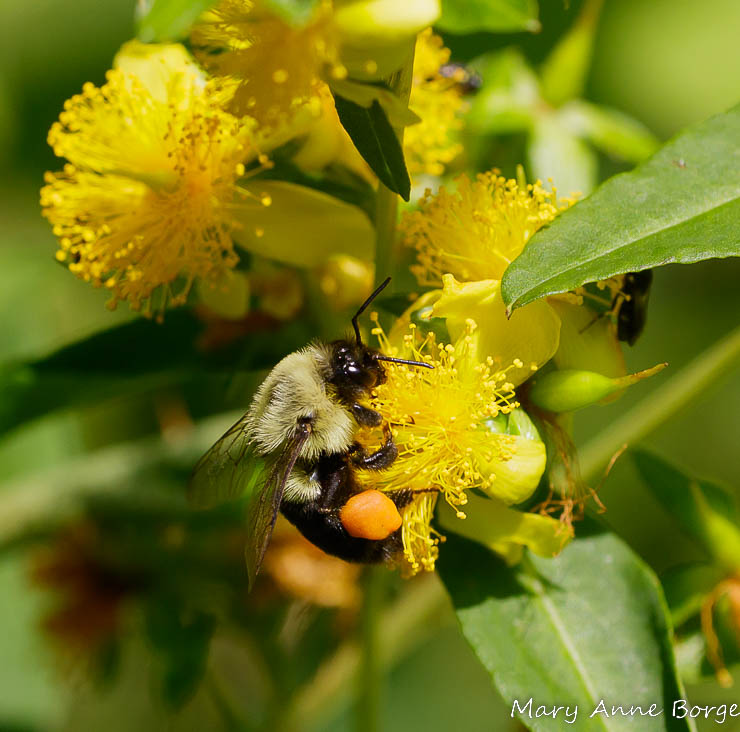
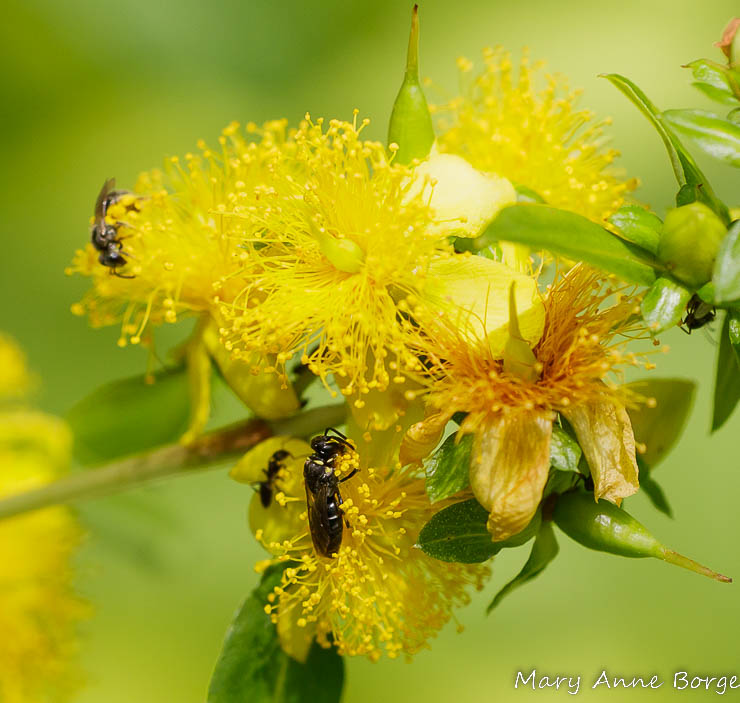
In late July I found a Striped Hairstreak in our habitat, my first time seeing this species. This butterfly was not only new for me, but it’s rare where I live in New Jersey. What was it doing in my garden? Striped Hairstreaks are typically found at forest edges where there are nectar sources, and with nearby access to its caterpillar foods – oaks, walnuts and hickories. We have nectar sources, and there are suitable caterpillar food trees nearby, so check and check.
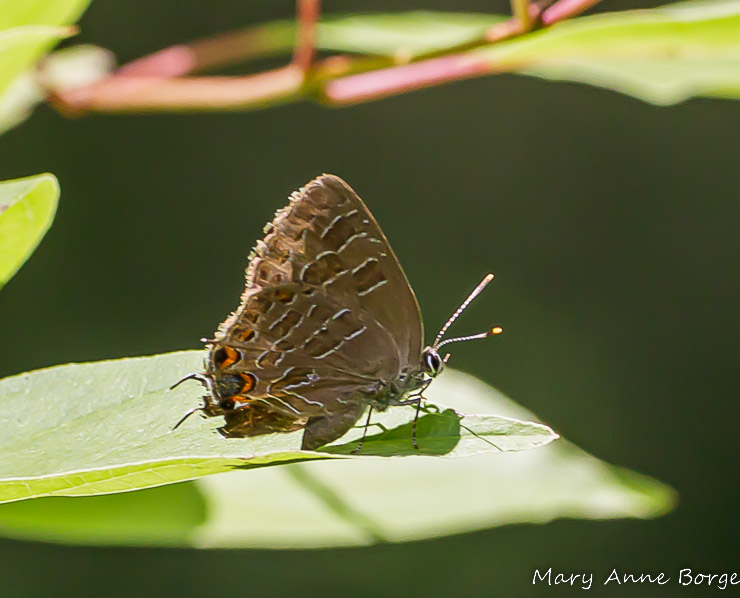
Catbirds arrived in spring and stayed through mid-fall. I saw them just about every day, usually in pairs, but sometimes in groups of four or more. Early one afternoon in August I witnessed a young Catbird being tutored on the proper way to take a bath.
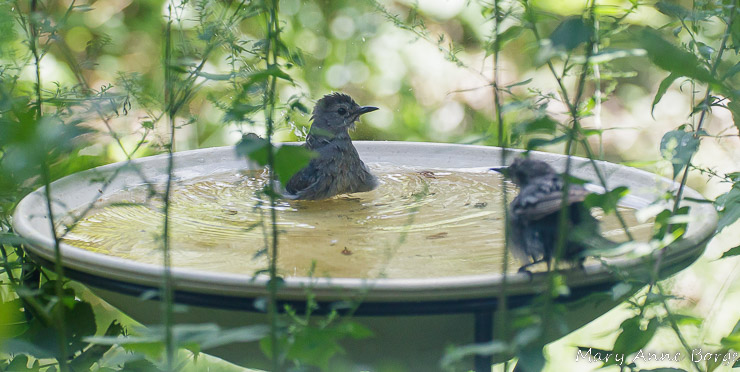
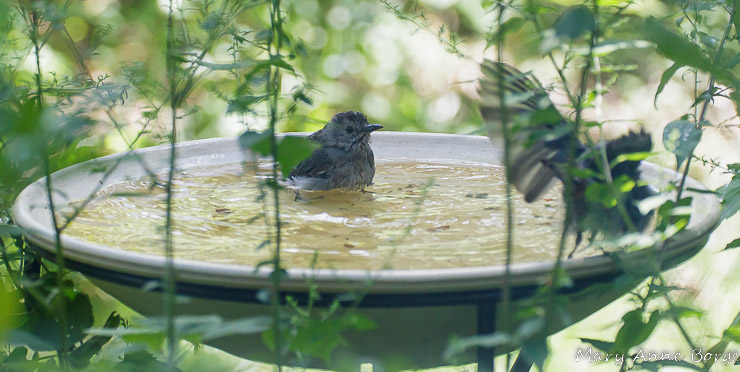
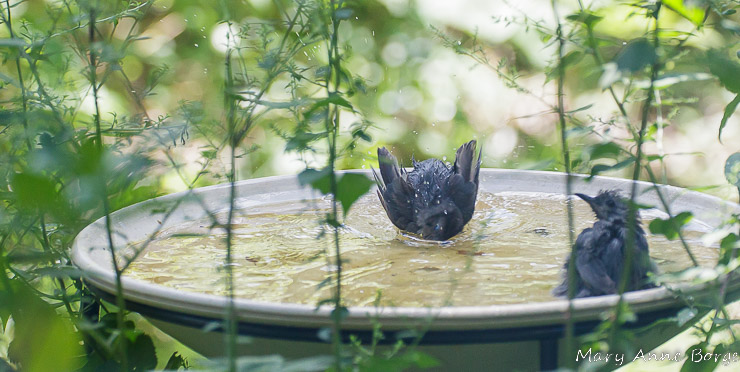
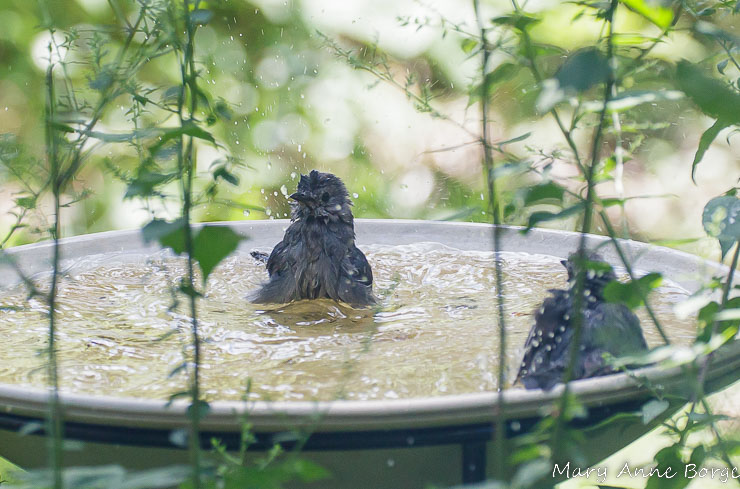
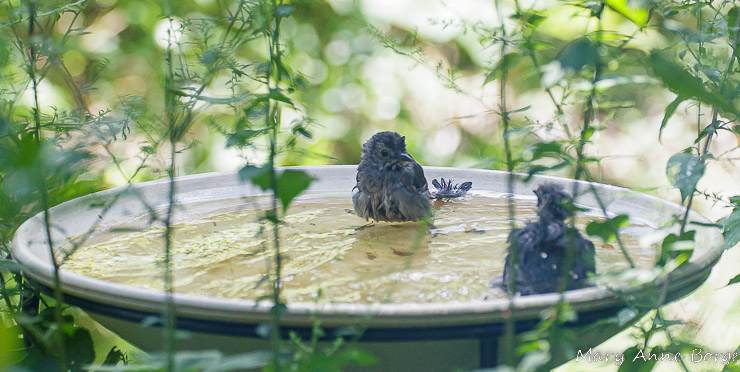
As Flowering Dogwood (Cornus florida), Winterberry Holly (Ilex verticillata) and Blackhaw Viburnum (Viburnum prunifolium) fruit ripened, the Catbirds were joined by migrating birds who passed through, using our habitat as a rest stop.
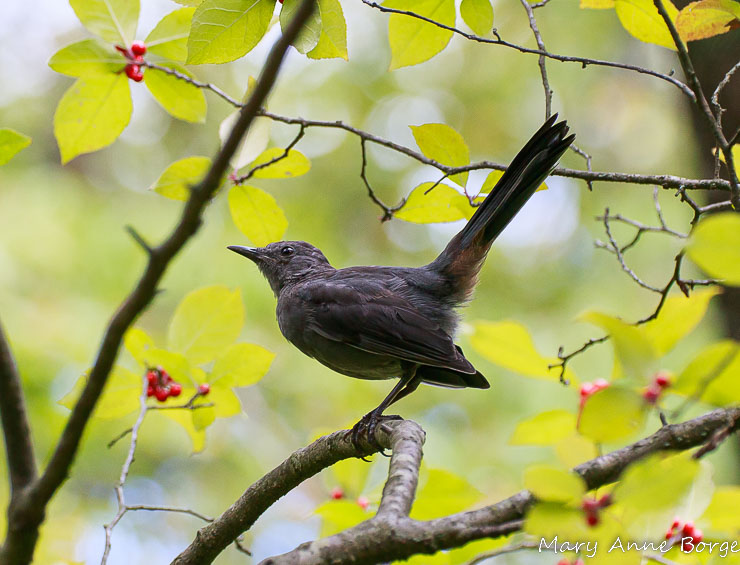
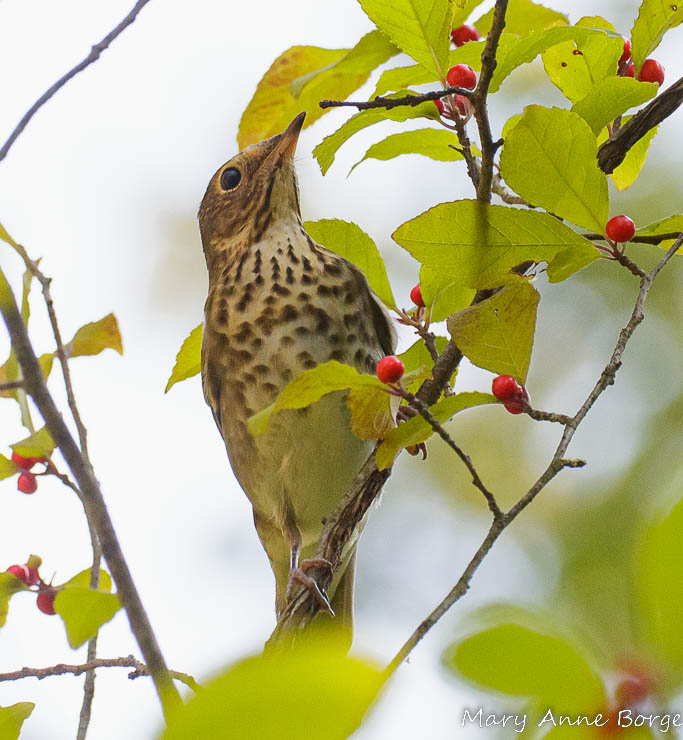
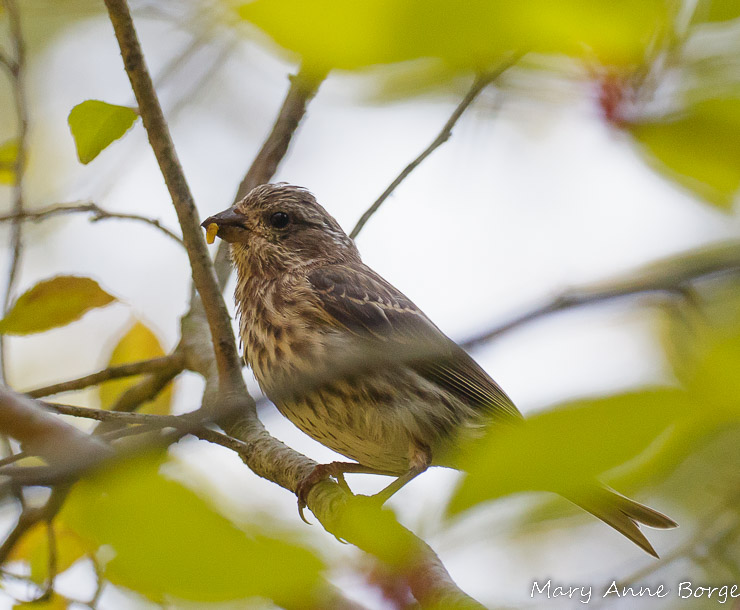
My favorite event was a visit from a Sleepy Orange in late September.
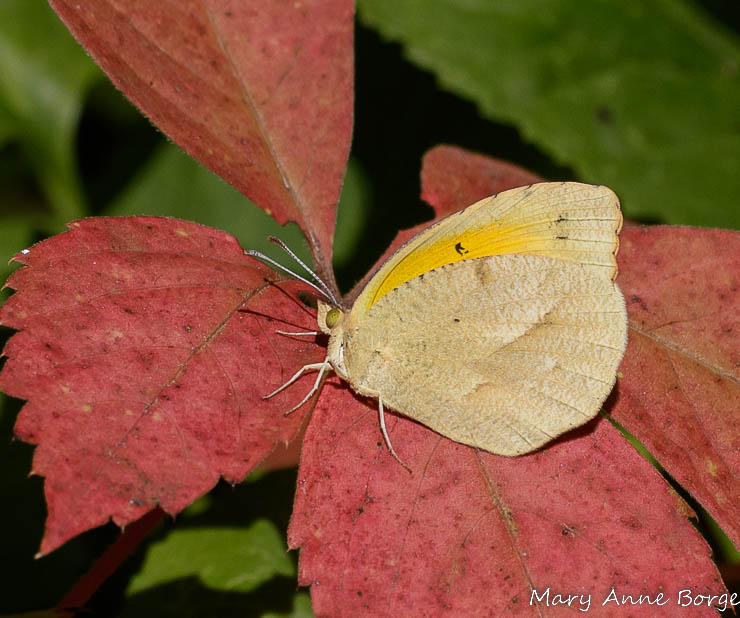
I love this butterfly for its pioneering ways. It’s mainly a tropical butterfly, but works to extend its range northward, positioning itself for continued survival in these days of climate change. Instead of the southward migration strategy for winter survival employed by many insect and bird species, some Sleepy Oranges fly north in late summer and fall. I imagine them getting together, looking for volunteers to fly north, saying, “See if you can survive the winter in a place where you can find nectar for yourself and a partner, and food for the kids (caterpillars). If you succeed, great! We’ve extended our range. If not, no big deal, we adults will all be dead by late spring anyway.” I’m not sure that’s what really goes on, but I like to pretend it is.
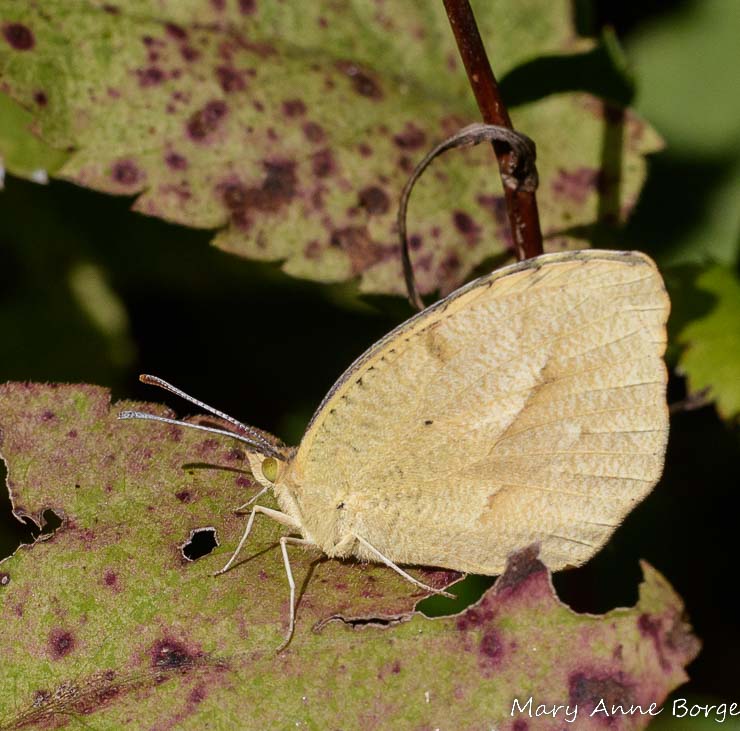
At one time the Sleepy Orange was thought to be unable to survive the winter any farther north than North Carolina. But they are now seen fairly often in central New Jersey and eastern Pennsylvania, and may have established year-round colonies. I first encountered a Sleepy Orange in 2006 at nearby Bowman’s Hill Wildflower Preserve, but this was my first sighting of the species in my own habitat. Very exciting! This year I had nectar to offer this thirsty butterfly, but to extend its range it needs the food its caterpillars require, Wild Senna (Senna Hebecarpa, S. marylandica) or Partridge Pea (Chamaecrista fasciculata). I didn’t have the necessary caterpillar food to offer this year, but we’ll have some Wild Senna by next summer.
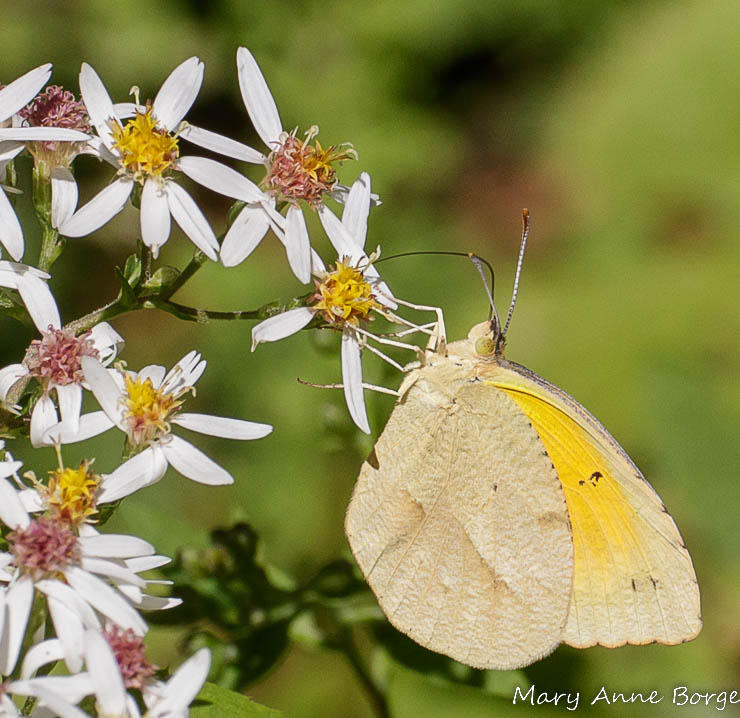
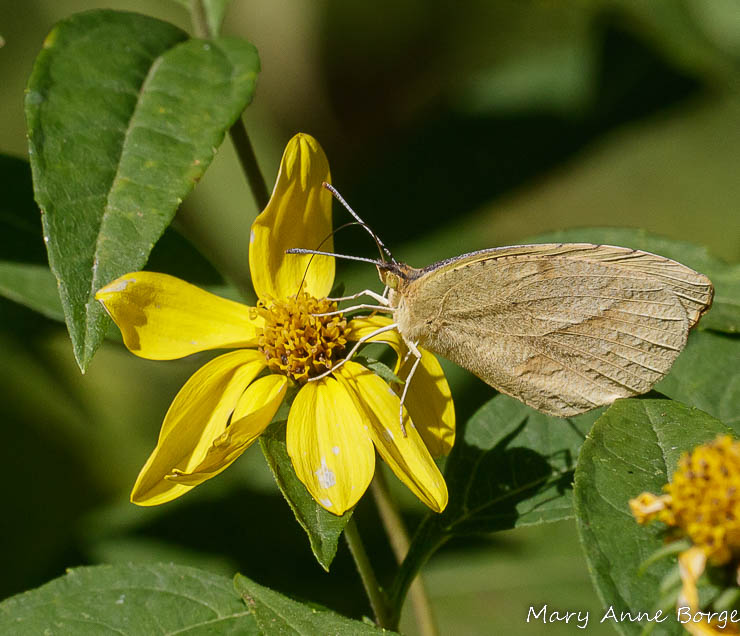
No matter what time of year, there is always something interesting to see right outside our doors. I have my desk facing the windows so I can be easily distracted by wildlife. Even on a winter day I may see Box Elder Bugs, Chickadees, Titmice, Carolina Wrens, White-breasted Nuthatches, Juncos, White-throated Sparrows, Red-bellied Woodpeckers, Downy Woodpeckers, Robins, Bluejays, Pileated Woodpeckers, Yellow-bellied Sapsuckers, Cedar Waxwings, or Brown Creepers. Some visit for fruit, but many are gleaning insects from the branches, bark and leaves of trees and shrubs, and from the fallen leaves on the ground.
Red-tailed, Sharp-shinned and Coopers Hawks sometimes stop by. On rare occasions, a Bald Eagle does a fly-over.
Want to see more wildlife? Make your own backyard an inviting habitat. Just provide the food birds, butterflies, bees and other animals need in the form of plants native to your region, and do less: leave fallen leaves in your planting beds, leave spent perennials standing, don’t use pesticides, herbicides or fertilizers, reduce your lawn if you can.
You don’t need to have a large property to host and see wildlife. We live in an end unit in a townhouse development with a homeowners’ association (HOA), adjacent to commonly owned natural areas that were preserved when the development was built more than 30 years ago. (Note that we leave the leaves, standing spent perennials, and don’t use pesticides.) Even a planter or a window box can bring wildlife within view.
Why travel thousands of miles away from home to see wildlife, when you can make exciting discoveries in your own backyard?
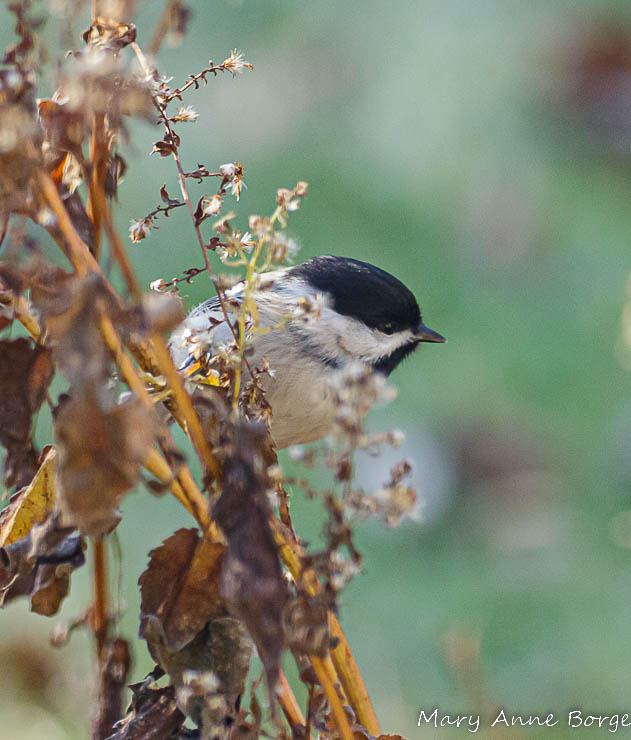
Related Posts
Sleepy Orange Butterflies are Back
A Wildlife, Family, and Pet-friendly Lawn
‘Will Work for Food’ – Extra-floral Nectaries
Where Do Winterberries Come From?

Exceptionally beautiful photos! Nature is so wonderful!
Thank you! Nature is an exceptionally beautiful subject!
Yes I agree!
Please email me with new posts
I think you have just become a follower.
Mary Anne, I always look forward to your posts with great anticipation. Fabulous photography, wonderful information, and the icing on the cake is your ability to convey both in a manner akin to reading a great book you don’t want to end. Oh! And you continue to inspire your audience to create their own native wilderness no matter the size/restrictions of the plot.
Thank you ! Already looking forward to the next entry.
Thank you, Kay! It’s so nice to hear from you.
Such wonderful and interesting information and photos in this article! We live in Northern Ohio and see most of the birds and bugs you’ve featured but I’ve learned so much more now! I am also an amateur photographer and am constantly outside photographing our flowers, birds, and bugs similar to the photos you feature. Thank you!
Thank you, Kelly!
Truly lovely, Mary Anne: you are both a scholar and an artist!
Thank you, Bill!
Loved the bird pics especially the one at the Am. Holly. The St. Johnswort always makes me happy and so I must replaced a shrub that died after a 10 year run.
Thanks for the knowledge and eye candy.
I’m glad you enjoyed the post!
Dear Mary Anne~ Love your blog, especially the “catbirds-taking-a-bath” series. What fun to peek at them from behind a curtain of greenery! They are one of my favorite birds with all their eccentricities. I was not familiar with the Bottlebrush Buckeye but happy to learn about it and intrigued by all its visitors—the bee photos are fabulous! I would love to find some to plant although Western MD may be too cold for it, but what a banquet it provides! I will also try to find some St. Johnswort to plant since I know it can tolerate our winters and your photos convinced me pollinators love it! Lastly, had you considered the hairstreak might be a Striped since the hindwing blue spot near the tail is capped with black and orange and a Banded’s is not. Fran Pope
>
Hi Fran, thank you for the correction! You are absolutely correct, the butterfly is a Stripe Hairstreak. I knew that, but my brain must have been on autopilot when I wrote ‘Banded’ incorrectly. I just made the correction. The St Johnswort should do fine for you. I love it, and it’s deer resistant. The Bottlebrush Buckeye does fine with New Jersey winters, but it has kind of an odd range: https://plants.sc.egov.usda.gov/home/plantProfile?symbol=AEPA2. Good luck if you decide to try it. I’m glad you enjoyed the post. Thanks for letting me know.
I am interested in your heated birdbath and would welcome your recommendations. Also, how do you avoid raising mosquito larva inthe water in the summer?
To avoid mosquito larvae, change the water about every 3 days, because larvae need longer than that to develop, or put something in the water to keep it moving, since this prevents the female mosquitoes from laying eggs. There battery operated ‘water wigglers’ to keep the water moving. There are lots of heated birdbaths. You might try looking at your local garden center, or Wild Birds Unlimited or Duncraft. We had several Bluebirds, then Robins, then House Finches at ours the other day. Good luck!
Your posts are ALWAYS just wonderful!!! Thanks!!
Thank you, Deedee!
Incredible close-up of the sweat bee gathering pollen! Thank you for sharing your bounty of images. Happy New Year!
Thank you! It was so much fun to see what she was doing. Happy New Year!
Wow! Beautiful photos. Thank you 🙏🌍
Always so much to learn from your posts! My big take away’s today were about the sleepy orange & the bluebirds. My hometown in eastern PA has lots of wonderful conservancy’s where we love to hike and keep our eyes out for birds, butterflies, and flowers so we’ll have to keep my eye out for the Sleepy Orange. Also I had no idea that bluebirds eat the berries of the American Holly. We have both birds and berries, so I’ll be keeping my eye on that area of our property to see if the bluebirds are hanging out there. Happy New Year!
Thanks, Beth, I’m glad you enjoyed the post. Definitely keep an eye out. We learn so much just by observation. Happy New Year!
I sure do love reading your work. Your writings soothe my soul.
Thank you for all of the wonderful photos and info!!
I’m glad you liked the post!
Wonderful photos and an excellent informative commentary. Best wishes for a healthy and happy New Year.
Thank you, John! A healthy, happy new year to you!
Thank you Mary Anne for this wonderful post, and all of your others which are so informative. Your photography is excellent and punctuates your text about what we are seeing. Great.
Cheers and Happy New Year.
Thank you, Michael! Happy New Year!
Great post!
Thank you, Mike!
Thank you. I really enjoy your newsletter. I live in southern Michigan, have no lawn and lots of messy perennial garden and I love to see the insects, birds, and mammals that come my way. Susan Miller
I’ve missed your posts! Yay, 2023 for new beautiful photos and interesting commentary.
Thanks, Pam!
Once again, MaryAnne, you have delighted me with your gift of photos. It is time to move my desk. We have planted a lot of things we learned from you and your peers at the preserve. We are grateful for our slow habitat stretching by giving up the lawn.
We owe that to you. Thank you.
Hi Patricia, I’m glad you like the photos. Sounds like you are doing all the right things to develop your own habitat!
Beautiful photos, Mary Anne!
Thank you! Beautiful nature.